Images and case presented by ECG Stampede. KEY QUESTIONS With this condition, what three ECG features predict adverse outcomes and what is the expected progression of ECG changes? What is the treatment?
Read More

Images and case presented by ECG Stampede. KEY QUESTIONS With this condition, what three ECG features predict adverse outcomes and what is the expected progression of ECG changes? What is the treatment?
Read More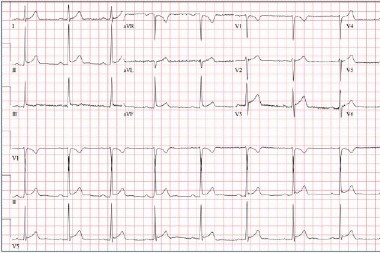
History: A 39-year-old male with no known past medical history presents to urgent care for evaluation of several hours of sharp, non-radiating, left-sided chest pain. The pain is non-exertional, non-pleuritic, began after his last meal and resolved without intervention approximately 30 minutes prior to arrival. No history of similar pain in the past. No associated shortness of breath, nausea, vomiting, or diaphoresis. View the ECG taken and consider what your diagnosis and next steps would …
Read More
KEY QUESTIONS What Electrolyte disturbances cause the interval problem seen in this ECG? Which dysrhythmia is this patient at risk for?
Read More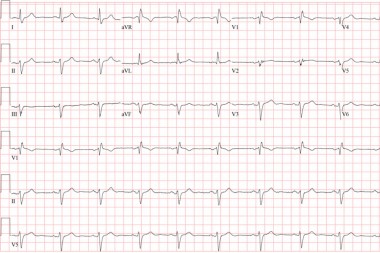
The patients is a 58-year-old male who presents with chest pain. He describes it as sharp, lasting seconds, and worsened by lifting objects at work. Review the initial ECG taken and consider what your diagnosis and next steps could be. Resolution of the case is described on the next page. (Case presented by Tom Fadial, MD, Assistant Professor, McGovern Medical School, The University of Texas Health Sciences Center of Houston.)
Read More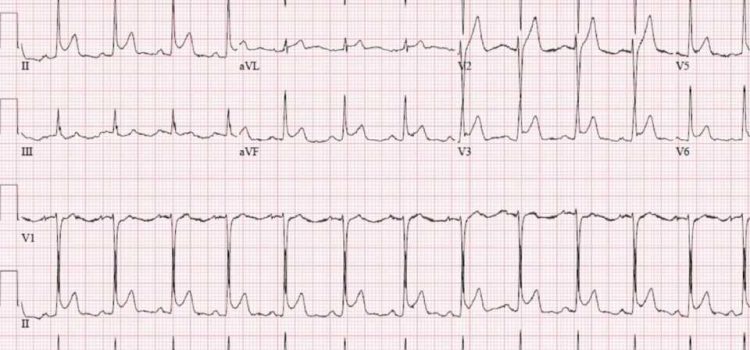
KEY QUESTIONS What features differentiate acute pericarditis from ST-elevation myocardial infarction? What are the criteria for diagnosing acute pericarditis? What are the treatment options?
Read More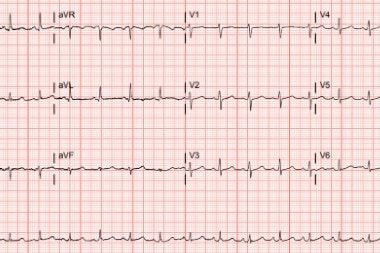
The patient is a 57-year-old female who presents to urgent care with progressive shortness of breath and chest pain of “several weeks” duration. On exam, she is nonobese, normotensive, slightly tachycardic, and tachypneic with clear lungs and distant heart sounds. View the initial ECG taken and consider what your diagnosis and next steps would be. Resolution of the case is described on the next page.
Read More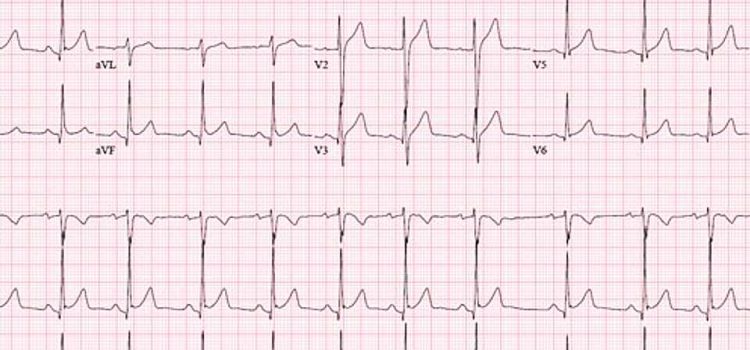
KEY QUESTIONS What phenomenon explains the ST elevations in this ECG? What are the features of this condition? What is the clinical significance of this phenomenon?
Read More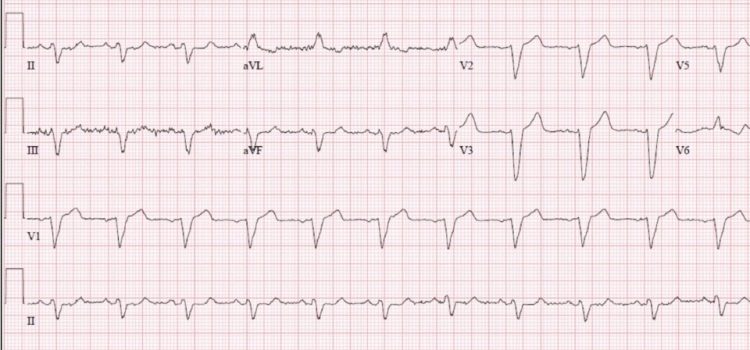
KEY QUESTIONS What diagnosis explains the widened QRS? What are the electrocardiographic criteria for making this diagnosis? What rule(s) can help diagnose acute myocardial infarction with an ECG like this?
Read More